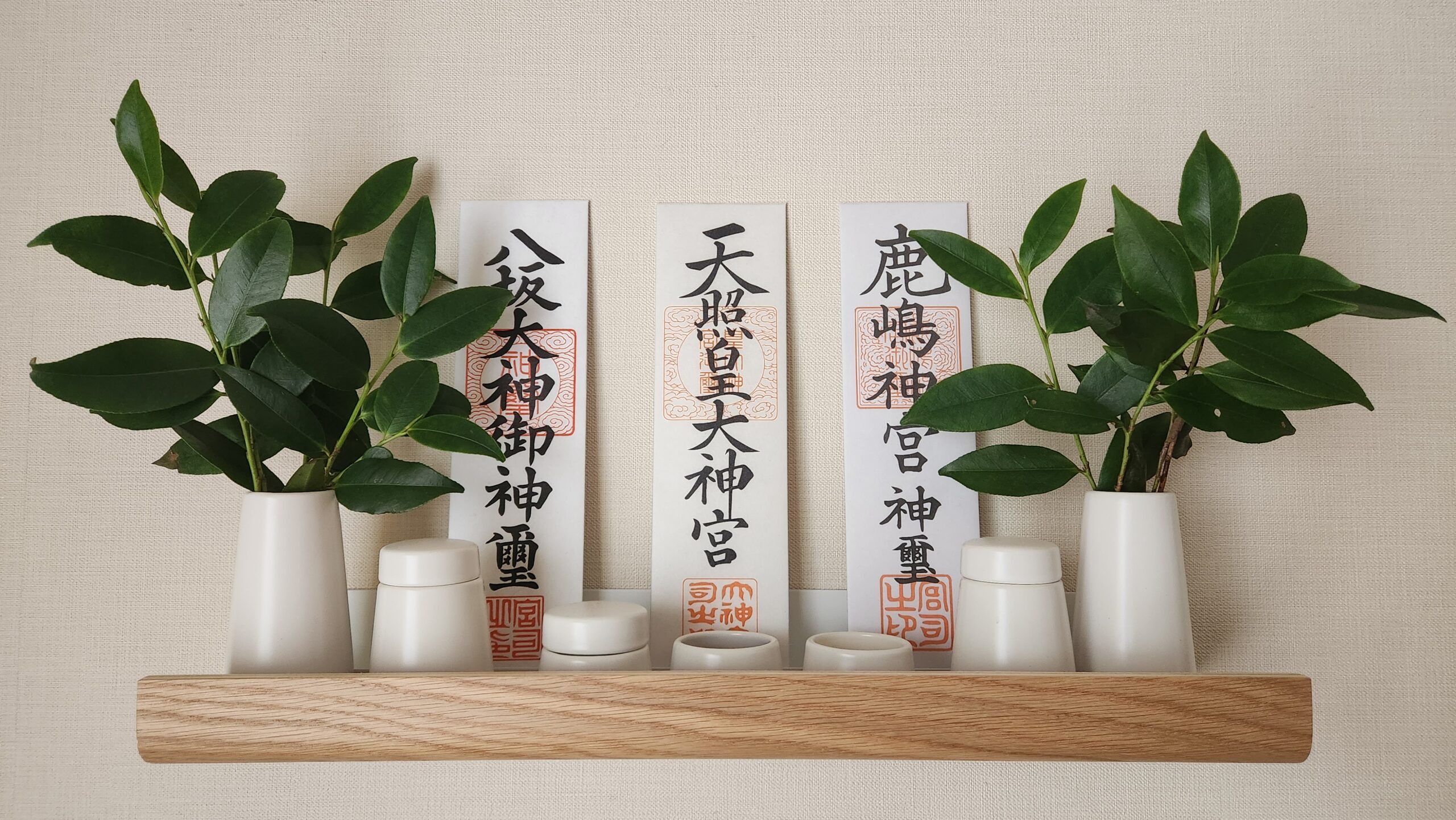Many Japanese people describe themselves as “non-religious.” Yet, it is common to visit shrines for the New Year, honor ancestors during Obon, or celebrate seasonal rituals. At first glance, this might seem contradictory—but it has deep roots in Japan’s history and culture.
Historical Background
Since ancient times, Shinto and Buddhism have been deeply embedded in Japanese life. However, after the Edo period, it became common for people not to formally belong to any religious organization, which contributed to the widespread sense of being “non-religious.”
Even so, Shinto and Buddhist practices naturally blended into daily life, shaping unique forms of faith.
Even today, most Japanese people do not formally belong to any religion. I myself am non-religious, but the kamidana shown in the photo is the one I actually have in my home. A kamidana is a small household altar where gods and ancestors are honored. I pray at this kamidana every morning and evening. Kamidana can be used by anyone, regardless of religious affiliation. Later, I plan to share how to set up a kamidana in your own home.
Faith Beyond Religious Labels
Japanese people’s belief in gods is not necessarily tied to doctrines or religious organizations. Many feel intuitively that “gods exist” and express gratitude or prayers through daily life and seasonal events. This flexibility has created a unique mindset of “believing in gods without being religious.”
This cultural approach may seem puzzling to people from other countries. It has been embedded in Japanese history for so long that it transcends the concept of religion—it has become an integral part of everyday life.
Cultural Practices of Worship
Many Japanese annual events incorporate prayers and gratitude to gods and ancestors. These are not linked to religious membership but are widely observed:
- Hatsumode (New Year’s Visit to Shrines): Visiting shrines or temples at the start of the year to pray for health and good fortune.
- Shichi-Go-San (7-5-3 Festival): Celebrating the growth and health of children at ages 3, 5, and 7.
- Setsubun (Bean-Throwing Festival): Driving away evil spirits at the change of seasons by throwing roasted soybeans.
- Obon: Welcoming and honoring ancestral spirits, often with family gatherings and rituals.
Additionally, Japanese people often have a natural, unconscious belief in gods residing in nature. Examples include:
- Otsukimi (Moon Viewing): Appreciating the full moon in autumn and giving thanks for harvests and nature.
- Rain Prayers: Traditional rituals to pray for rain to nurture crops or avoid drought.
- Ryujin (Dragon God) Worship: Expressing gratitude and prayers for water safety and bountiful rivers, seas, and lakes.
These practices have been woven into daily life for centuries, shaping a culture where faith exists without the need for formal religious affiliation.
Conclusion
Being non-religious in Japan does not contradict belief in gods. Without formal religious labels, people naturally appreciate nature, ancestors, and the spiritual presence in daily life. This is Japan’s unique form of faith—one that transcends traditional religion and becomes a seamless part of everyday living.
Even without a specific deity, Japanese people often feel that a god is always present somewhere in their hearts. Perhaps that is why many experience mysterious and wondrous phenomena, and why intuition is often sharp. I, too, have keen intuition and can receive messages from the divine, helping transform your worries into rays of hope. Please feel free to try my readings.



Comments